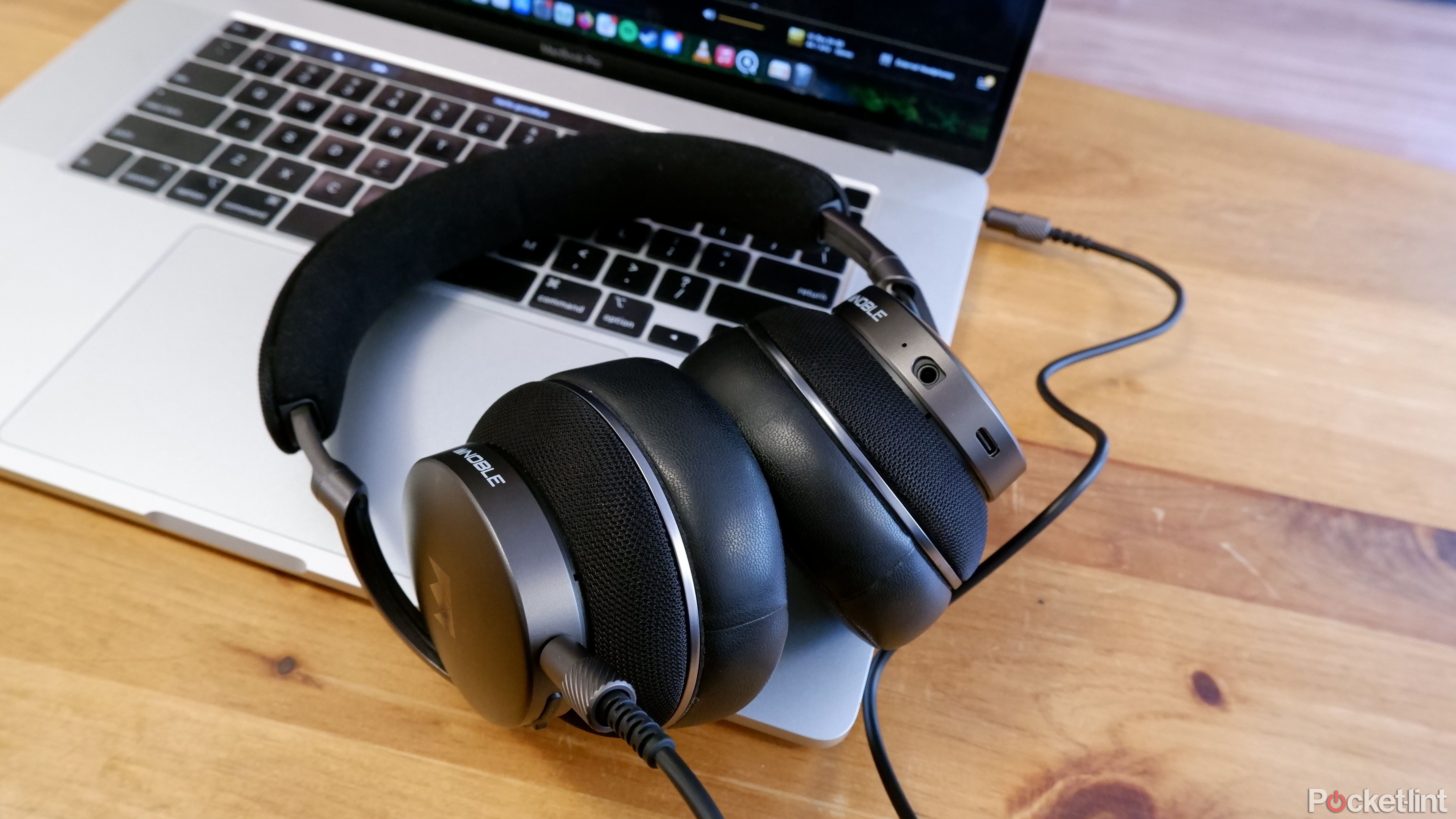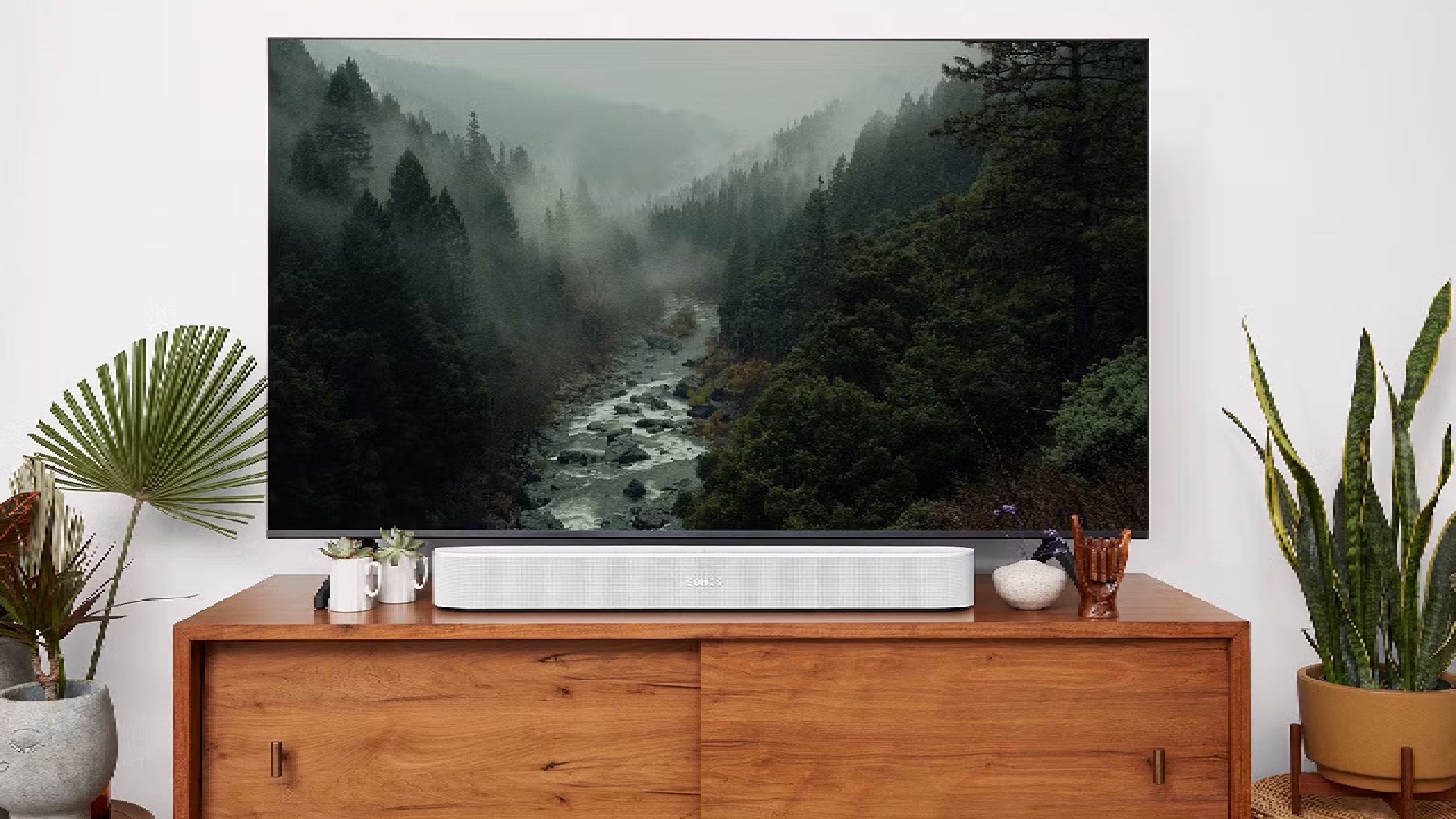Summary
- PC surround sound tends to be more flexible, and even provide practical information in some cases, such as audio production or winning games.
- Home theater audio systems are static, and generally require a heavier investment to achieve what PCs can accomplish with a pair of $150 headphones.
- There’s still value in a living room setup, but we’re progressing towards a future where immersive audio and video will be highly mobile.
I’ve been thinking a lot about surround sound lately. Sometimes about how it works, but mostly, about how valuable it actually is. I’m on record as saying I don’t care that strongly about having Dolby Atmos in my home theater system — I even intentionally bought a soundbar without it when I was upgrading last fall. The short version is that a lot of the best movies and shows were recorded without it, and I don’t find it worth spending gobs of cash on something that doesn’t substantially enhance the content. A 65-inch 4K TV gives me a better view of what’s happening — I don’t need to hear a TIE Fighter roaring overhead.
Recently, it occurred to me that there is someplace I genuinely value surround sound, and that’s in front of my laptop. I find it’s not only a lot more practical there, but cheaper, and doesn’t mean having to obsess with format compatibility.

Related
Don’t throw away money by spending too much on HDMI cables
You only need a few facts to figure out how much to take home.
Form versus function
The practical value of PC surround sound
Many of us spend hours in front of a computer every day for work purposes. Some of us add another few hours on top of that for entertainment. Either way, there’s often no choice but to use headphones for our distractions, since coworkers don’t want to hear our music and podcasts, and loved ones would probably rather hear their own media than ours. It’s a little rude to make your partner listen to Call of Duty or Stardew Valley if they’re not playing as well.
The wonderful thing about this, though, is that many of us get an affordable surround option dropped in our laps — having speakers directly in your ears makes it easier for codecs to fool you. Some headphones are better at it than others, naturally, but simply flipping on Windows Sonic for Headphones is enough to get decent spatial audio effects from my HyperX Cloud IIs, and you can download the Dolby Access or DTS Sound Unbound apps if you’ve got compatible gear. You really shouldn’t have to spend any more than $150, whereas a Dolby Atmos soundbar with more than 2.1 channels — enough to actually simulate 3D audio — is going to set you back quite a bit.
Perhaps more importantly, surround sound often feels more practical in a Mac or PC context.
If you’ve got a laptop or tablet, headphones mean you can bring surround sound with you, instead of having to sit in a very specific spot that you have to schedule time for. Before I destroyed them with sweaty weightlifting workouts, my Beats Fit Pros let me watch videos in Dolby Atmos on noisy airliners — and if I’d wanted to, it would’ve been trivial to connect them to my Apple TV 4K.
Perhaps more importantly, surround sound often feels more practical in a Mac or PC context. It can be difficult to recreate a wide soundstage on desktop speakers, whereas a good set of headphones makes it easy, even revealing new layers in the music and movies you like. Some editors, musicians, and producers absolutely require this, and in games, surround sound can score you victories. In my usual game of choice, PUBG, knowing the direction of gunfire or footsteps can make the difference between claiming a chicken dinner or once again getting ambushed by someone I never saw. I’ll put on headphones even when I do have decent external speakers available.

Related
How I know when to upgrade vs. replace a PC
It’s best to postpone buying a whole new system, but sometimes it’s inevitable.
A quick defense of living room surround sound
And thoughts on the future
Sonos
To be fair, there is something special about Dolby Atmos or even just 5.1 surround when it’s mixed properly and delivered on a decent living room system. I can be a film snob sometimes, but I still like to be immersed in whatever it is I’m watching, and a booming surround mix is a nice shortcut if I don’t have to pay much for it. There’s even a tinge of nostalgia to it — I think back to some of my favorite theater experiences, like seeing Jurassic Park in 1993. Yes, that does mark my age at this point, but I don’t think I’ve ever been as floored by movie before or since in terms of pure entertainment.
And clearly, I know that many people can and do spend many hours in front of their TV every week, often every day. It’s also how some people socialize. When I lived in Austin, new episodes of Game of Thrones were a great excuse for my friends and me to have a small party, no matter that the show turned south towards the end. In a better world, my friends and I might still be getting together every Sunday — and going silent the moment the sound system kicked into high gear.
It feels like we’re entering an era when fewer and fewer people are going to bother saving up for those rigs that consume an entire basement.
Outside of those contexts, however, static audio systems are starting to feel as antiquated as the pre-pandemic theater experience. On my own, I want to enjoy music, video, and games the way I want, where I want, and that means being able to get the best sound regardless of which device I’m using. Moreover, a laptop, tablet, or handheld PC is often the best device, period, since it tends to be the most flexible. I can use it as an all-in-one media streamer, game console, and workstation if I hook it up to my TV with an HDMI cable.
I don’t think home theater setups are going to disappear anytime soon, for the reasons I’ve already mentioned. But now that I think about it, it feels like we’re entering an era when fewer and fewer people are going to bother saving up for those rigs that consume an entire basement. Indeed, if you’ve used a headset like the Vision Pro, Quest 3, or Bigscreen Beyond 2, you may have seen a glimpse of the future — why bother cobbling together either a PC or home theater setup when you can have the best of both combined? A few years from now, sharing a movie with friends on a 100-inch screen with Dolby Atmos might be as simple as syncing our AR glasses together. I guess I’ll see how quickly companies like Apple and Meta fulfill their promises.

You might also like
Everything you need to know about PEVs, or personal electric vehicles
You can use PEVs like e-bikes and scooters to explore, run errands, or speed up your commute.










